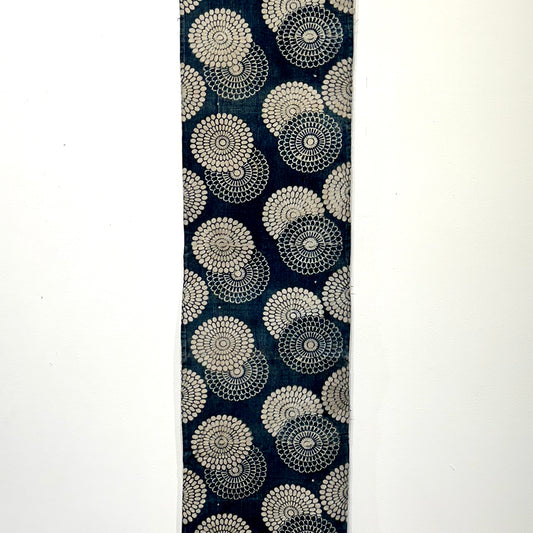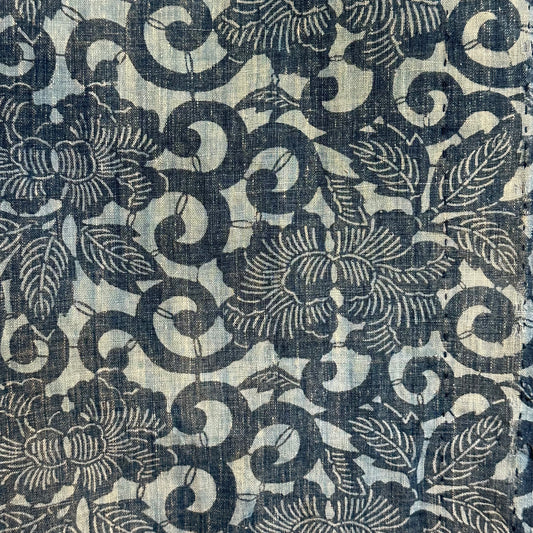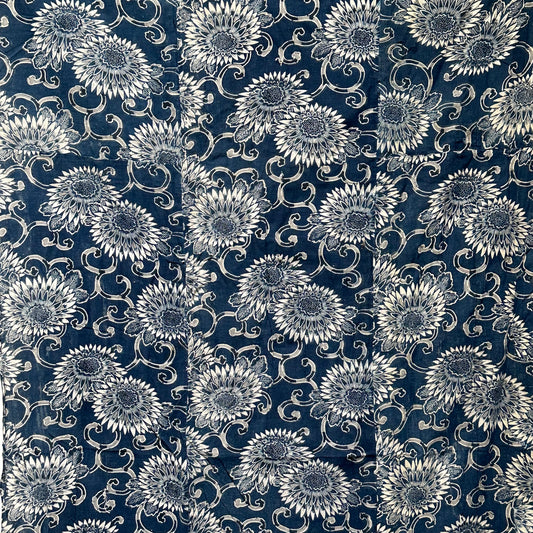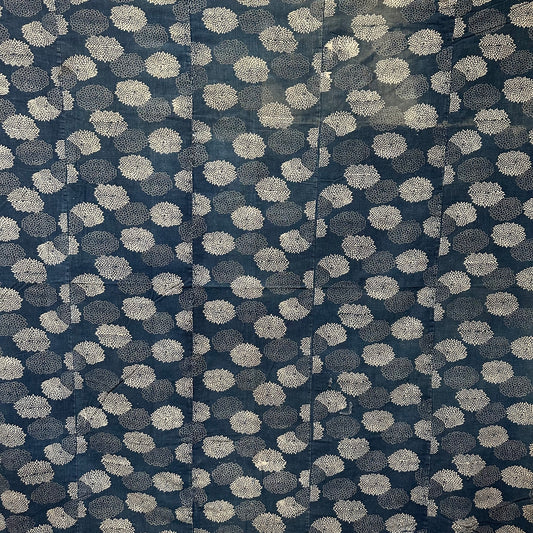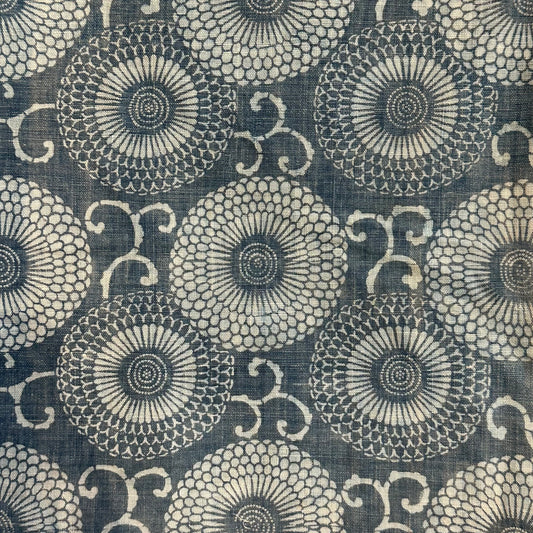Collection: Katazome Paste Resist
Katazome is a centuries-old Japanese dyeing technique that combines artistry and skill to create intricate, stencil-based patterns on fabric. Developed during the Edo period (1603-1868), katazome rose to prominence as a way for artisans to make beautiful, affordable textiles that imitated the look of costly woven designs. It became especially popular among commoners who couldn’t access high-status fabrics but still wanted beautifully patterned garments, like kimonos.
The process involves using a stencil, or “katagami,” to apply rice paste onto fabric as a resist. The fabric is then dyed, often with indigo, creating stunning contrasts between dyed and undyed areas. The patterns in katazome are rich with cultural symbolism, from nature motifs like plum blossoms and cranes to geometric shapes that reflect Japanese aesthetics. Each design has meaning – for instance, chrysanthemums symbolize longevity, while bamboo signifies resilience.
Katazome isn’t just a technique; it’s a form of storytelling, with each piece reflecting the history, values, and craftsmanship of Japan. Today, katazome endures as a cherished tradition, blending art, symbolism, and practical beauty in a way that continues to captivate textile lovers around the world.



